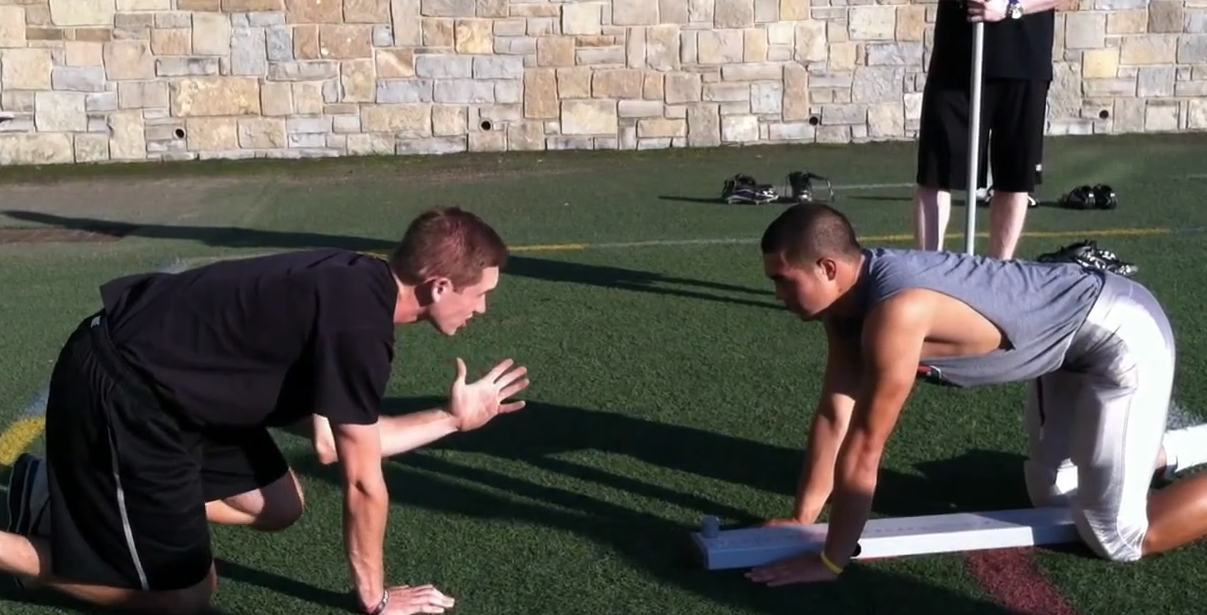Screening and Assessing: Detour or Delay?
Written by Gray Cook FMS
 A detour may actually be the quickest path to your destination.
A detour may actually be the quickest path to your destination.
Yes, you read that comment correctly. I hate detours and absolutely despise delays, but are the two the same? No—they are not.
A detour is a diversion from a more direct route. It simply means the conventional path to a destination is blocked, impassible or just not safe, and that an alternate route is necessary. The rerouting is actually an effective time-saver out of harm's way if you consider the big picture. The problem with the detour disappointment response is perspective. All we see is that damn sign telling us we need to follow detour signs. If the signs are placed correctly, we never get to see the predicament that caused the detour. We are kept at a distance to ensure our safety, but the problem is just ahead even though we cannot see it. It’s out of our perspective or in the future, so to speak.
There is a delay in the preset schedule from the original plan of events, but imagine for a minute that you ignored the sign and forged ahead, only to be stopped by those working on the problem and instructed to backtrack to the ignored detour. That brilliant act cost even more time, and that is the best possible outcome because ignoring the detour could cost much more than time. You could meet the forecasted danger head-on—you could actually become a part of the problem. The detour doesn’t look so bad now, does it?
Now think of the all delays in our pursuit of health, fitness and athleticism. We despise those nagging injuries and scheduling conflicts that cost us valuable workout time. Compound that with the new paradigm of movement screening and assessment. Wow—great… one more delay, thanks a lot!
Many exercise and rehabilitation professionals see screening and assessment as a delay, but I urge them to consider it more as a detour. I also encourage them to learn to speak about the detour in an intelligent and authoritative way. They must develop a command of the new paradigm because the population is changing right under their noses. Movement patterns are eroding and the increased exercise risk can cause unnecessary delays in training and in the pursuit of active athletic lifestyles.
I recommend they get on a path to develop skills with movement appraisal and correction so they can actually see that the detour is a very short delay—under the direction of a competent professional. I teach them to aim the corrective exercise at the weakest link and show them how to quickly retest to identify positive changes in movement.
Many misinterpret the intention and assume they must endure months of mind-numbing corrective exercises simply to move a little better. Nothing could be further from the truth. When you know what you’re actually trying to correct, things move quickly and the feedback is clear, but when you randomly sample a general movement preparation program across a diverse group, there is no way effective change can happen at an efficient rate.
The intended purpose of the preliminary battery of movement testing referred to as movement screening (in exercise populations) and assessment (in rehabilitation populations) is to actually get the subject to the desired destination as soon as possible. Unfortunately, some misinformed professionals think these measures are just another way to force corrective exercise and movement preparation, to encroach further and further into workout time and somehow perpetuate the further softening of America. Not even close! They are designed to get everyone to the hard-ass workout time as soon as their butt can take it—and not a moment sooner!
When screening and assessment systems identify a major functional movement deficiency, they provide the professional the criteria to jab a detour sign in the ground. They need to be able to say with authority, “We need to redirect our focus if we are to hit our target.”
The systems help the professional state simply and plainly that a fundamental movement problem will actually impede the push to improve physical capacity. This is because a significant movement problem has been identified at the perceptual and behavioral level. It means that underlying mobility and stability problems can be present or that dynamic patterning requires resetting and relearning. Movement dysfunctions can compromise safe and aggressive conditioning, because they can cause compensation and poor technique regardless of cueing and coaching.
Remember, an average score on a movement screen is acceptable. No one is shooting for movement perfection. The act of screening is to identify risk and severe movement problems before they can compromise safety and complicate programming that targets physical capacity. The act of prescreening movement patterns is a systematic tool to forecast something up ahead that could potentially cost much more time than the simple detour. The detour’s sole purpose is to deliver you to your destination on the safest and fastest path considering the current situation.
Pre-exercise screening and assessment is not a delay; it only takes a few minutes. Sometimes it will not even suggest a detour. When it does suggest a detour, follow the sign. In the long run, it will actually save time!





